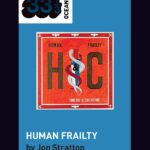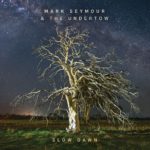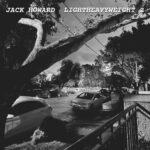Tom Brewster Horn of Plenty Review
Tom blogs about the contents of his new Horn of Plenty box set.
Author: Tom Brewster.
Date: July – August 2010.
Original URL: http://sexwarrobots.blogspot.com/2010/07/hunters-collectors-horn-of-plenty-box_18.html
I got this recently for $50, which I’m pretty sure is about $150 cheaper than when it came out. It’s ridiculous value, really – 14 CDs and 2 DVDs. Everything the band recorded over its 16 year career is in there. I intend to review all of it piece by piece, starting with the self-titled debut and its follow-up The Fireman’s Curse. I was already familiar with these two albums, having bought the first (with the World of Stone EP appended) and downloaded the second, but the rest, barring certain popular singles, will be all new to me.
I was surprised to learn that Hunters & Collectors took its name from a song by Can from its late era that I haven’t yet familiarised myself with, but the first two albums more than elucidate the connection. Hunters & Collectors is bookended by its two best tracks, “Talking to a Stranger” and “Run Run Run”. Both revel in the locked groove motif of Can, but “Talking to a Stranger” filters it through Gang of Four, sounding a lot like “What We All Want”, only better – a big call considering that that’s my favourite Gang of Four song. Hunters & Collectors is one of the best Australian albums of the 80s – another big call, as that was a great decade for “Oz Rock” – and John Archer and Doug Falconer were together a greatly underrated rhythm section.
The Fireman’s Curse is slight step down from its predecessor. It’s less consistent and the lyrics are more oblique than ever (not that the lyrics were the point at this stage). Still, it begins and ends as strongly as the debut, and is probably already one of my favourite albums of 1983.
The Jaws of Life (1984) is the point at which Hunters & Collectors started fashioning their jams into traditional song structures. I’m totally on board with that; hmmm, what’s that other band I listen to that’s influenced by Can and Talking Heads and named after a song by one of them?
“42 Wheels” kicks off with – you guessed it – the sound of a car engine starting, bringing to mind the noise experiments of Sparklehorse a decade later, before that glorious rhythm section stomps out an almost “Rebel Rebel” type rhythm, accompanied by slide and tremolo guitar that goes on to punctuate most of the album. Highlights include the downbeat “Hayley’s Doorstep” and an excellent cover of my favourite Ray Charles song “I Believe to My Soul” (shortened to “I Believe”).
Human Frailty (1986) takes definite steps towards the Hunters sound that would pack the pubs throughout the remainder of the 80s and 90s, streamlining the songs into more radio-friendly fare. 1985 single “Throw Your Arms Around Me” shows up here and was again released as a single (not for the last time); though barely charting in the top 50, it became one of Australia’s most beloved songs of all time, although it sounds out of place here, being Mark Seymour’s first attempt at a sensitive pop song. Falconer’s drumming is calmer here, but interestingly, Archer changed his bass style little, and didn’t really need to.
What’s a Few Men? (1987) is the point at which Hunters & Collectors had completely transitioned from Krautrock fanboys to pub circuit mainstays. The almost Midnight Oil-sounding single “Do You See What I See?” is strategically positioned as the second track, and it still is, and was then especially, one of the band’s biggest hits. What’s a Few Men was re-released in the US as Fate, a calculated but unsuccessful move to try to break into that elusive market. The tracklist is also different: four tracks are missing, with four added in their place, and the tracklist has been shuffled around. The album’s proper title is taken from A.B. Facey’s memoir A Fortunate Life, and the title track is one of those missing from Fate, which is a shame; it stands out of context as a decent World War I song and is a better ballad than “Around the Flame”. Also missing are the decent “Still Hanging ‘Round”, the excellent, bluesy “Give Me a Reason” and the so-so “Breakneck Road”. Fate’s extra tracks, appended to all CD versions of What’s a Few Men? vary; “Back on the Breadline” and “Something to Believe In” genuinely deserved an Australian release (and, having said that Fate failed to appeal to the US market, “Breadline” did receive a lot of airplay on US alternative radio stations), but “Wishing Well” and “Real World” don’t stand out here and I don’t imagine they would if I were to recreate Fatewith some iPod programming.
Ghost Nation (1989) starts with a bit of a red herring. The verses of “When the River Runs Dry” are led by the rhythm section, like in the old days, while the choruses are of the catchy variety that fans were used to by then. It was their biggest hit at the time, deservedly so, and another song on high rotation on many alternative radio stations in America. As with some other Hunters 7 Collectors albums, Ghost Nation starts off well but then loses momentum, but at the moment I consider it a notch above What’s a Few Men?.
Cut (1992) is a far better welcome to the 90s for Hunters & Collectors than it could have been. It’s a conscious step away from the last couple of albums, with a harder sound and more interesting beats. “Holy Grail”, probably the best known Hunters song next to “Throw Your Arms Around Me”, is about the band’s failure to crack the US market; helped by its tried and true chord progression (“More Than a Feeling” transposed to a different key), it’s ironically the closest thing they had to a hit over there. Oddly, “True Tears of Joy” is, according to Wikipedia, the band’s biggest hit, yet I’d never heard of it until I bought the box set.
Demon Flower (1994) ushers in the band’s “ho-hum” period. Their lives show justified their continued existence well enough (see forthcoming reviews ofLiving in Large Rooms/And Lounges), but Australians, particularly the youth, were looking to You Am I, Silverchair and Powderfinger for their fix of local music. “Betrayer” holds its own amongst the best of the Hunters catalogue and claims some of the best brass work since the early days, but the most of the rest of Demon Flower is fair to middling at best.
Juggernaut (1998) is no improvement over its predecessor. Mark Seymour had by now smoothed out the gravel in his vocals to the point where he was hardly recognisable as the same that graced any of Hunters’ early albums, so when the band steers away from the middle of the road to rock, it’s not as effective as it once would have been. When they do make it work, such as in “Mother Hubbard” and especially “Wasted in the Sun”, which combines the slow-burning intensity of some of the downbeat entries in the band’s early catalogue with the pop sheen of Cut, it really works. However, this doesn’t happen often enough throughout the album to distinguish it significantly from Cut or Demon Flower, nor make it a worthwhile sendoff for such a locally lauded and globally under-appreciated band.
Given Hunters & Collectors reputation as a live band, the Living in Large Rooms and Lounges 2 CD set (1995) is a valued possession amongst completists, a group that technically includes me now. The problem inherent in all live albums, though, is that the better they are, the more they remind the listener that they are no substitute for having actually attended the concert in question or one like it. People who have seen Hunters & Collectors live, a group which will probably never include me, will likely tell you that about these albums. Hell, the audiences at the two shows in question will tell you as you listen by way of their rapturous applause and sing-along shenanigans.
Living in Large Rooms documents a typical pub show from 1995. As such, the early stuff is fairly represented; the period of 84-89 accounts for roughly half the set. “42 Wheels” explodes through the speakers, demonstrating that the band was still capable of an extraordinary performance at this late stage of its career, and it makes me wish they’d included “The Slab” and “Inside a Fireball” among others. The later stuff demonstrates that the band was able to judge the relative merits of its own material, or at least its suitability to a live setting; see “Easy” in particular.
…And Lounges is a strange album indeed. An acoustic Hunters & Collectors show, eh? To paraphrase Dr. House, “that makes sense…if you don’t think about it for more than two seconds”. The conceit necessitates the balance to shift towards the band’s later, more ballad-heavy material (“True Tears of Joy, “Courtship of America”) and greatly renders inert the earlier stuff (“When the River Runs Dry” loses its electric thunder and “The Slab” makes no sense at all). “Betrayer” and “Holy Grail” sound fine, and of course it would have been baffling to exclude “Throw Your Arms Around Me”, but I prefer the Human Frailtyversion. The most confounding aspect of the album is the inclusion of “Say Goodbye” as a secret track, having already included it in the main set as well as that of its sister album.
We’re into the odds and ends now, but that’s by no means a bad thing. Cargo Cult (2008), exclusive to Horn of Plenty, rounds up three EPs: World of Stone(1981), Payload (1982) and Living Daylights (1987 – a tribute to Timothy Dalton’s first outing as James Bond from the same year, perhaps?). The CD actually contains a fuckup: it stars with “Run Run Run” instead of World of Stone’s title track, then crams “Watcher” and “Loinclothing” into one track. That EP is a dry run for the slightly better structured Krautrock-aping style of the debut; the title track basically repeats itself until it passes the seven and a half minute mark. Payload (1982) is presumably made up of Fireman’s Curseouttakes, but the latter two songs would have been more than welcome there. It’s a sonically fascinating EP more than anything else, and Doug Falconer is at his heavily percussive best. Fast forward five years and Living Daylights gives you even more options besides the Fate tracks for imagining how much betterWhat’s a Few Men? could have turned out, or perhaps Human Frailty if they’d waited a bit. “Inside a Fireball” is some catchy shit right there, and either album would have benefited from its presence.
Mutations (2005) shares its name with a Beck album that was disingenuously marketed by Geffen as not being “officially” the next entry in his catalogue. Hunters & Collectors’ Mutations is accurately described as such, however, given that it is a b-sides and rarities collection. It’s better than most, too. “I’m Set Free”, unlike “Run Run Run”, is a Velvet Underground cover, and a creative one at that. “Know Your Product” is more perfunctory and a more predictable choice of cover; just as The Saints probably felt obliged to cover Motown classics when they availed themselves of a horn section, Hunters in turn probably thought it was a waste not to cover the horniest of Saints songs. “Mind of an American” is a disappointing way to finish off the collection. It’s an unimaginative jab at US foreign policy – better leave that to Midnight Oil and stick to local concerns.
Spare Parts (2008) is the far less substantial and far more asterisk-ridden of the two rarities collections. Everything here besides the original 1984 version of “Throw Your Arms Around Me” is either a live recording or a remix. Meh.
“But I know you want more!” as Tim Shaw would have said 17 years ago, and as it so happens, although I’ve reviewed all 14 CDS in the Horn of Plenty box, there are still the 2 DVDs to go.
The Way to Go Out (1985) is an appropriately raw-sounding show, originally released on VHS as well as CD. It’s not for casual fans, but it’s a good one to have if you love The Jaws of Life as much as I do. You could probably find better bootlegs on the internet these days though.
Under One Roof (1998) is a Sydney show from the band’s farewell tour. The sound and picture are superb and the set is a decent representation of the band’s entire career. Mark Seymour’s voice had smoothed out considerably by this point, but he was able to revisit his 1984 self and belt out a convincing “42 Wheels”.
Natural Selection contains every promo video the band ever did. Whoop-dee-doo. It’s best for multiple sittings if you’re likely to get weary watching 18 videos by the same band. There’s not much else to say except to note that “Carry Me” is same version (both the audio and video) as that featured in “The Way to Go Out”.
Well, now I’ve reviewed the entire contents of the Horn of Plenty box. I’m going to go to sleep for a month.
N/A.





